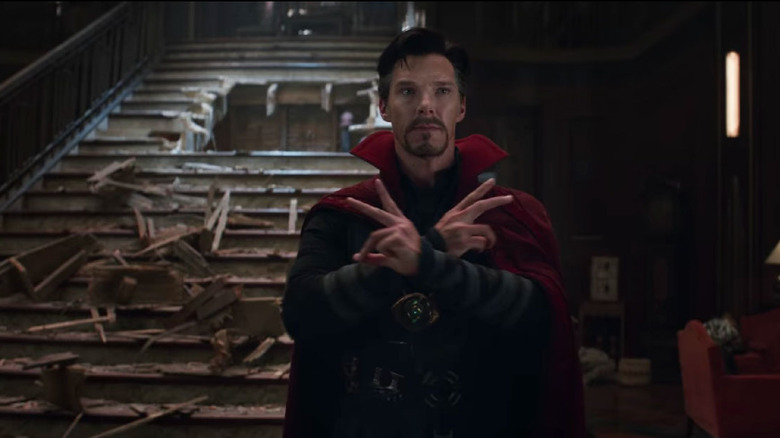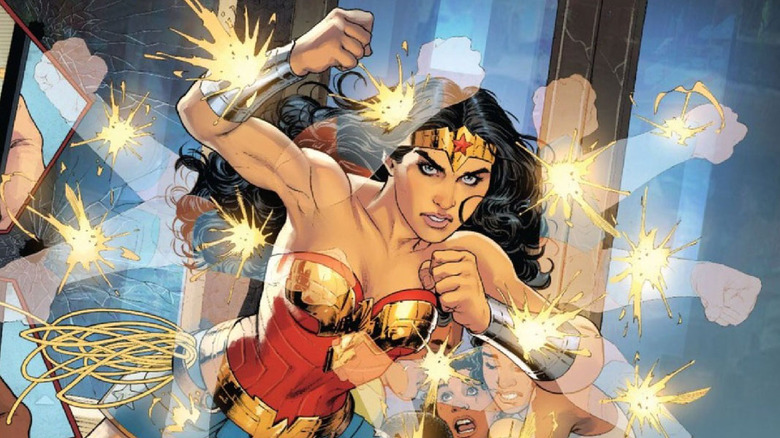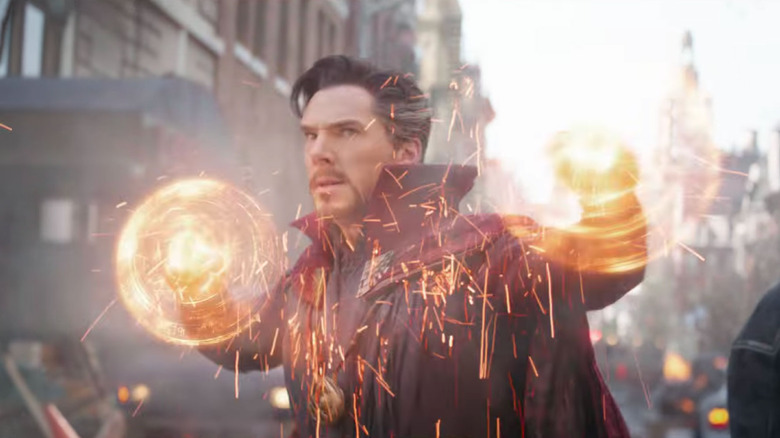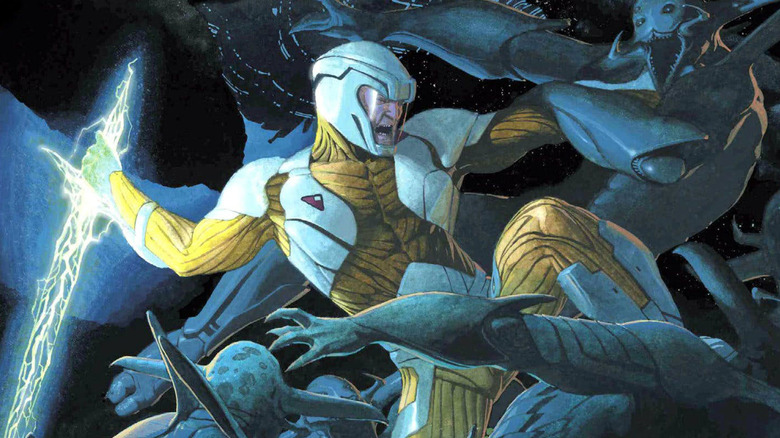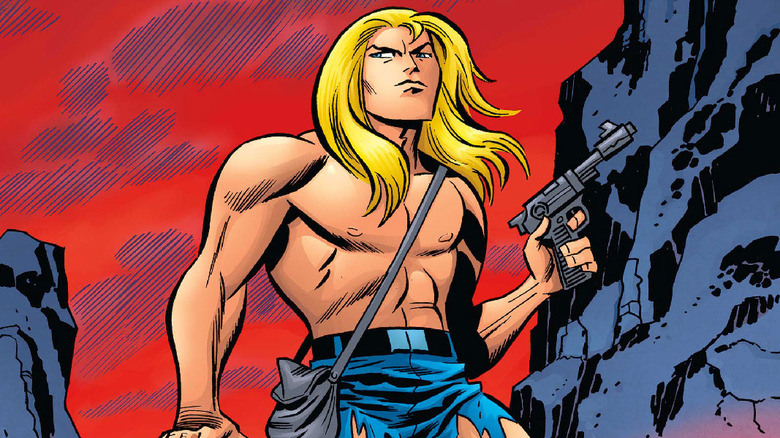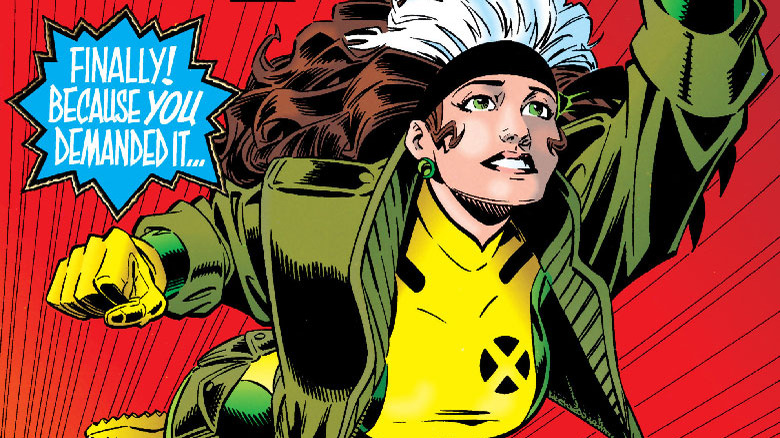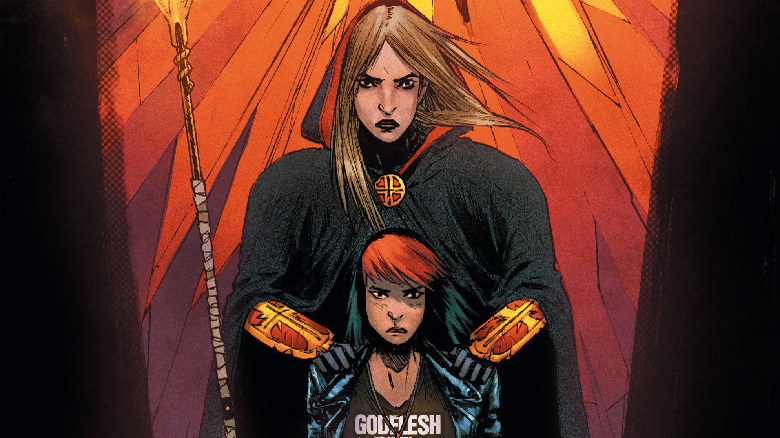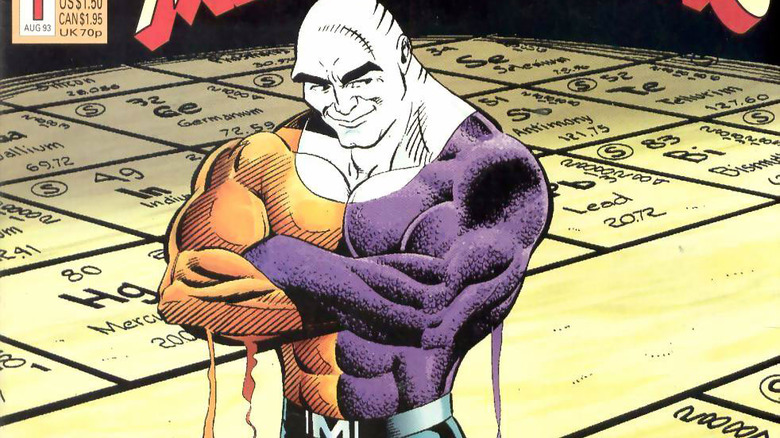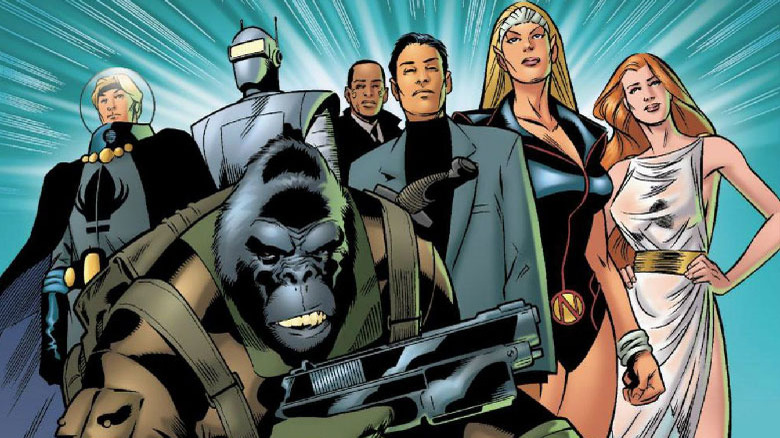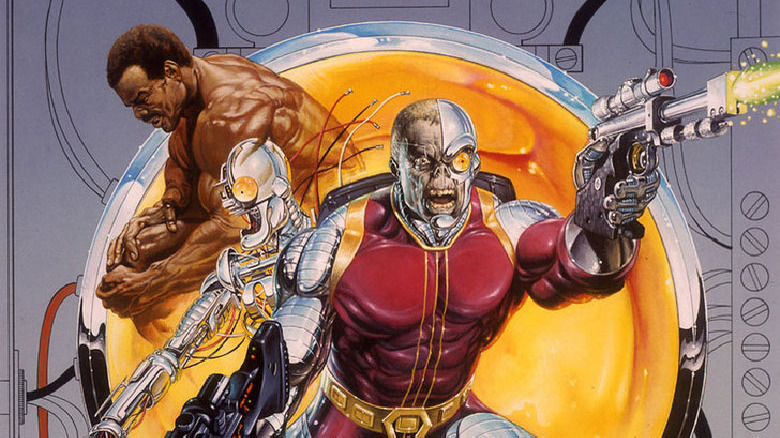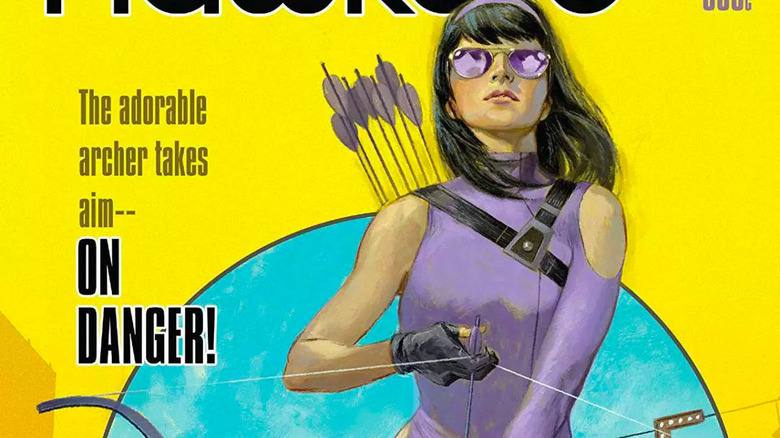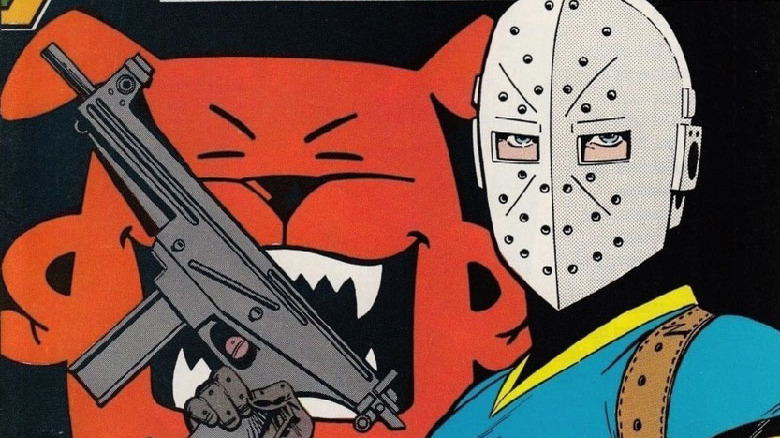Superheroes Who Deserve Their Own Video Games
From Arkham Asylum to Superman 64, video games have given superhero fans some of the best and worst experiences that have ever played out on consoles. Let's be honest, though: it really seems like the same handful of heroes keep getting games over and over. Don't get us wrong, Spider-Man's great, and his video game appearances have been solid titles more often than not, but with a couple dozen of them to choose from, they better be.
Meanwhile, there are plenty of awesome superheroes who have been thoroughly unappreciated by the video game industry, even when they're exactly the sort of characters who would work perfectly in a more interactive medium. From the household names who should've had their games already to obscure but awesome heroes who could put a new spin on ideas that don't seem to work for mere mortals, here are the superheroes who deserve their own video games.
Wonder Woman
The most obvious pick for a superhero who should headline her own game is also the most surprising. Despite being one of the most well-known fictional characters in the world, and despite a handful of appearances in the ensemble casts of games like Lego Batman 3, Wonder Woman has never starred in her own video game. Not once. She didn't even get a bad tie-in game when Wonder Woman was a hit film establishing itself as the best entry by far in the DC Extended Universe. Look, we're not advocating for the return of the awful cash-ins that used to accompany every major movie release, but at least it would be something.
Wonder Woman's lack of video game stardom is mind-boggling, especially when you consider how many other superheroes have made the jump from the page to the console. Seriously, there was an Aquaman game back in 2003, and if Aquaman got one game, Wonder Woman should probably have about six.
It's pretty clear that she'd lend herself well to a God of War-esque action/adventure title that brought her mythological foes to a modern setting. While near-omnipotent heroes like Superman are often difficult to bring to games, Wonder Woman really only has three powers you need to worry about: flight, super-strength, and her bullet-deflecting bracelets. We've seen two of those plenty of times, and the third would translate pretty easily to a combat style that emphasized counters, like Arkham Asylum, Bayonetta, or even Metroid: Samus Returns.
Doctor Strange
When it comes to Marvel's movie superheroes, it probably won't surprise you to learn that most of the characters who have headlined their own movies have starred in their share of video games. As for the ones who haven't, well, Ant-Man's size-changing action might still be a hard sell despite bringing some fun potential to the table, but Doctor Strange seems like a far more notable absence. Now that he's been a key character in the biggest blockbuster of the year, it seems like it's high time the good doctor got his own game.
It's not just popularity that he gets from the movies, though. They also give a template for how they could work mechanically. One of the big problems that creators often have with the comics version of Doctor Strange is that he's supremely powerful, with unmatched sorcery that can change the fate of the world. With that kind of power, tutorial levels and boss fights seem pretty hollow.
The movies, on the other hand, provides a much more game-friendly take. It's earlier in Strange's career, and his magic, while powerful, requires a little more time to get going. Throw in mind-bending enemies like Nightmare and the Mindless Ones, those weird fractal-reality arenas for boss fights, and you've got a Sorcerer Supreme that could lend himself well to mechanics like skill trees, item-derived abilities, and epic action.
X-O Manowar
If you want to get technical about it, Valiant's X-O Manowar did headline a video game back in 1996, although it wasn't a solo title. Instead, it was a crossover with Iron Man that didn't really have anything to do with either character's story, and is mostly remembered as a bizarre, poorly received relic of its age. Besides, if anyone needs a second chance at a game, it's this guy.
He does, after all, have one of the single best premises in comic book history. Aric of Dacia is a Visigoth warrior from the 5th century who was kidnapped by an alien race called the Vine and wound up in possession of their greatest weapon: an invulnerable exo-suit that gives him super-strength, flight, and the ability to shoot energy blasts and manifest a sword made of lightning. When he makes his way back to Earth, the intricacies of space travel mean that he's been gone for centuries, so that he returns in the present day to battle the Vine and other enemies. In other words, he's "What if Conan was Iron Man," and that rules.
It's so easy to picture as a video game that it's shocking the first attempt went so poorly. Aric battling against Roman centurions could give way to the escape from the Vine ship, serving as a tutorial to get players familiar with the mechanics of both the barbarian and his armor before dropping him back into the modern day for bone-shattering battles through cityscapes.
Kamandi, the Last Boy On Earth
From Horizon: Zero Dawn to the Fallout series, post-apocalyptic settings have provided some pretty incredible foundations for video games. The Legend of Zelda: Breath of the Wild even proved that you could apply those same ruins-of-a-lost-society ideas to a setting that was more fantastical and kid-friendly, and if DC ever wants to get in on that action, they've got the perfect character to do it: Kamandi, the Last Boy on Earth.
Created by Jack Kirby — the artist who also co-created Captain America, Iron Man, the Hulk, the Avengers, and the rest of the Marvel Universe — Kamandi was a sort of buck-wild take on Planet of the Apes, only far, far weirder than those movies ever managed to be. After emerging from a vault as the last survivor of the human race — something that oughtta sound familiar to the Fallout fans out there — Kamandi explores the shattered world around him, encountering tiger-men, militaristic gorillas, and a dog-man scientist named Dr. Canus.
It's post-apocalyptic fun with a lighthearted adventure twist, and making it into an open-world, Breath of the Wild-style game could allow fans to finally explore the areas that Kirby featured on his mind-boggling map of Earth: After Disaster, but never got around to showing in the comics. Seriously, if you don't want a video game with a mission that takes place in the Kanga-Rat Murder Society, the Orangutan Surfing Society, or the Mad Hole, then what are we even doing here?
Rogue
Unsurprisingly, Rogue has had her greatest video game success as a member of an ensemble cast in games like X-Men Legends and Marvel vs. Capcom, but like most X-characters whose names aren't "Wolverine," she's never broken out into a solo role. That's a shame, too, since her set of powers makes her a great fit for a very specific type of adventure.
Games like Prototype proved that building a game around absorbing the abilities of other characters could be a blast even without the name recognition of a fan-favorite Marvel character. Applying that same idea to Rogue, giving players objectives that they can accomplish a variety of ways depending on which enemies they choose to take out and absorb, could lead to plenty of fun and a lot of replay value depending on, for example, whether you wanted to smash your way through a barrier, sneak past it, or soar over it. There's even a logical way to build in level progression by increasing the number of powers that Rogue can maintain at one time and adjusting the duration.
Beyond mechanics, Rogue has a mysterious past and a complicated history that's seen her as a villain, a hero, an X-Man, an Avenger, and more. For a comic, that can be a little tough to navigate around, but for a game, that just means that you can bring in whatever parts of the Marvel Universe that you want for an exciting story, whether the X-Men are involved or not.
The Magdalena
The most recent version of Top Cow's Magdalena has a solid premise for a game, but with the kind of history that's built into the character, it's practically begging for a franchise.
The core of the premise is that there's a secret order of warrior women made up of the descendants of Jesus and his secret wife, Mary Magdalene, which basically makes it The Da Vinci Code, if Tom Hanks was a scantily clad lady who liked to stab demons with the Spear of Destiny. Since first appearing in 1998, there have been multiple versions of the character that have hinted at a pretty lengthy history, but there's still a lot of territory to be mined. The latest iteration involves the current Magdalena losing her powers and training her successor, a teenage atheist who has to adjust her worldview once demons start showing up.
That premise, with a mentor figure and a young protagonist unlocking new techniques in a battle against overwhelming odds, has been the foundation for plenty of great video games over the years. Really, though, you could set a Magdalena title at any point in the past 2,000 years and make it work. Imagine the history and mechanics of an Assassin's Creed title, but with all the weird virtual reality sci-fi alien stuff swapped out for demons. You can keep the part from Assassin's Creed II where you fistfight the Pope in the secret room underneath the Vatican, though.
Metamorpho
With retro-gaming getting more popular every day, it's not uncommon to see a new spin on a classic game crop up to critical acclaim. Games like Blaster Master Zero and Sonic Mania have revived classic franchises, but Shovel Knight's massive success and Bloodstained: Curse of the Moon's retro-inspired take on Castlevania have proven that you don't need the famous name to make it work. That's where Metamorpho comes in.
As DC's "Fab Freak of 1,001 Changes," Metamorpho, The Element Man has the ability to turn himself into pretty much anything he can think of, from a cloud of flourine gas to a cobalt torpedo to a copper spring that can bounce him to the top of a skyscraper. While there have been a few misguided (and frankly not great) serious takes on him, he's always worked best in his original incarnation as a character rooted in weird, high-concept action with a touch of comedy.
That's what makes him the perfect character for a game that would revive the mechanics by A Boy and His Blob, with the difference being that this time, the boy and the blob were one and the same. Collecting elements like Mario collects coins to stock up a periodic table and unlock new transformations might just make for the perfect retro adventure.
Agents of Atlas
While big names like Batman might be more familiar to gamers and help to bring in audiences, there's something to be said for the characters that exist a little closer to the fringes of a superhero universe. These are the characters that can use the larger, world shattering action as a background while they get into the weird stuff. Not too long ago, Deadpool was one of those characters, and it worked out pretty well for him. There's a chance it might work for the Agents of Atlas, too.
The idea in the comic is that they're a "lost" superhero team from the '50s who were tasked with bringing down a pulpy mastermind called the Yellow Claw. When they reunited, in the 21st century, they discovered that the Yellow Claw had been testing them for decades to prove their worthiness to inherit his criminal empire, which they promptly began using for the greater good. You know, stuff like stealing all the gold in Fort Knox so that the corrupt head of a government agency couldn't use it to build an evil super-weapon.
That's enough plot for at least two games, but what really makes it work is the varied team lineup. There's stealthy secret agent Jimmy Woo, lovable siren Venus, cosmic-powered hero Marvel Boy, the indestructible Human Robot, and Gorilla Man, who occasionally shoot his enemies with a machine gun in each hand and each foot, Bayonetta-style. Think Saints Row meets Overwatch, and this thing writes itself.
Deathlok
Not all superhero games have to be action-packed open-world slugfests. Much like in comics, video games offer plenty of different genres, including story-focused Telltale's Walking Dead games, where the narrative is shaped by the consequences of your choices.
For that style of game, Marvel's Deathlok is perfect. It certainly has a premise that could lend itself to plenty of action, in that he's basically Marvel's version of RoboCop: a corpse modified with a cybernetic brain to create an expendable soldier. The only problem is that Deathloks tend to retain a little more of their human minds than anyone expects, leading to a struggle between the machine that's driving the body and the person that used to be.
A game that asks you to make crucial choices and shapes the narrative around whether you give into the cold, simple, and brutally effective options presented by the computer or the more complicated, nuanced choices of humanity could be a perfectly unexpected take. Throw in some action levels that gave you benefits like auto-targeting and faster reload for siding with the machine, and those moral quandaries start to have gameplay implications, too. There's even a built-in twist to spring on gamers in the sequel: the most recent version of Deathlok had the human brain of a sadistic serial killer and the computer that was striving to keep those impulses in check.
Kate Bishop: Hawkeye
Clint Barton is the superhero that nobody even bothered to call when Thanos showed up to murder half the universe, but he's not the only hero to go by the name of Hawkeye. It's an epithet that he shares with his younger protege, Kate Bishop. She's done her share of straightforward superheroics as a member of the Young Avengers, but her most recent series revolved around her attempts at becoming a private eye in Los Angeles, and how that always seemed to lead back to supervillains.
Games with investigation-based mechanics don't always work out that well — as much as we love them, the Phoenix Wright series just asks you to poke around until you've found everything, and the Arkham games' "detective mode" is only useful for seeing how many bones you're about to break once the combat starts. Blending them with superheroic stakes and arrow-shooting action would be challenging, but building an overarching mystery that unfolds as you play could work a lot better, and the 2013 Tomb Raider reboot would be a good place to look for inspiration.
Wild Dog
The 2005 Punisher game, in which Thomas Jane reprised his big-screen role as Marvel's most lethal anti-hero, is an underrated classic of the PS2 era, and what really makes it work is its sense of fun. While Frank Castle himself is a scowling, stone-faced straight man, the action around him goes to full-on ludicrous extremes, including cartoonishly wild moments where he'd use the environment around him to take out his enemies. For anyone who played it, dumping a bad guy into a tank of piranhas is truly a cherished gaming memory.
It's exactly the sort of idea that could be polished and tightened up for today's audience. The biggest improvement, though, would come from taking it to a whole new extreme of weirdness, and there's no better character for that than Wild Dog. He's basically DC's answer to the Punisher, but so much weirder that the only thing they have in common is that they just love gunning down criminals — or in Wild Dog's case, all the terrorists that he encounters running around his hometown in Iowa.
Recent years have seen Wild Dog experiencing an almost inexplicable surge in pop culture relevance thanks to his appearances on TV's Arrow and his supporting role in DC's Young Animal line, so maybe the time has come for Iowa's greatest vigilante to strap on his hockey mask and his electrified gloves and ride that wave into gaming fame, too.

